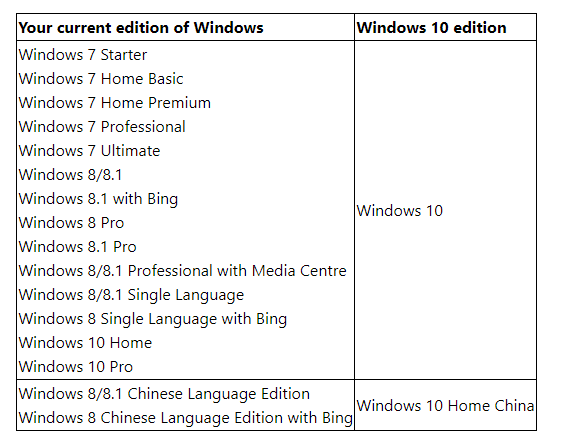Download the media creation tool to create installation media (USB flash drive, DVD, or ISO file) that you can use to install a new copy of Windows 10, perform a clean installation, or reinstall Windows 10.
How to use a tool to create installation media to install Windows 10 on another PC?
Follow these steps to create installation media (USB flash drive, DVD, or ISO file) that you can use to install a new copy of Windows 10, perform a clean installation, or reinstall Windows 10.
Requirements for downloading the tool
- Internet connection (Internet service provider fees may apply).
- Have sufficient data storage available on a USB or external drive
- Have a blank USB flash drive or blank DVD (and DVD burner) with at least 8GB of space.
- When burning a DVD from an ISO file, if you are told that the disc image file is too large, you must use dual-layer (DL) DVD media.
Using the tool to create installation media
- Select Download tool now and choose Run. You must be an administrator to run this tool.
- If you agree to the license terms, choose Accept.
- On the What do you want to do? page, choose Create installation media for another PC and then choose Next.
- Choose the language, edition, and architecture (64-bit or 32-bit) for Windows 10. This table will help you decide which version of Windows 10 you will choose:

- Choose which media you want to use:
- USB flash drive. Attach an empty USB flash drive with at least 8GB of space. Any content on the flash drive will be deleted.
- ISO file. Save the ISO file to your PC, which you can use to create a DVD. After the file is downloaded, you can go to the location where the file is saved or choose Open DVD Burner and follow the instructions to burn the file to a DVD. For more information on using an ISO file, see Additional methods for using an ISO file to install Windows 10 below.
- After the installation media is created, follow the steps below to use it.
- After completing the steps to install Windows 10, please check that you have all the necessary device drivers installed. To check for updates now, choose the Start button, and then go to Settings > Update & Security > Windows Update and choose Check for Updates. You can also visit your device manufacturer’s support site for any additional drivers that may be needed.
How to use the installation media you created?
Before installing Windows 10, you should save any work and back up your PC before you begin. If you used the Media Creation Tool to download the ISO file for Windows 10, you need to burn it to a DVD before you follow these steps.
- Connect the USB flash drive or insert the DVD into the PC where you want to install Windows 10.
- Restart the PC. Note: If your PC doesn’t boot automatically from the USB or DVD media, you may need to open the Boot menu or change the boot order in your PC’s BIOS or UEFI settings.
- To open the Boot menu or change the boot order,
- Press a key (such as F2, F12, Delete, or Esc) immediately after you turn on your PC.
- For instructions on accessing the boot menu or changing the boot order for your PC,
- See the documentation that came with your PC or visit the manufacturer’s website.
Note:
- See the documentation that came with your PC or visit the manufacturer’s website.
- If you don’t see a USB or DVD media device listed in the boot options, you may need to contact the PC manufacturer for instructions on temporarily disabling Secure Boot in your BIOS settings.
- If changing the boot menu or order doesn’t work, and your PC immediately boots into the OS you want to change, the PC may not have shut down completely. To make sure the PC shuts down completely, select the Power button on the sign-in screen or Start menu and choose Shut Down.
- To open the Boot menu or change the boot order,
- On the Install Windows page, choose your language, time, and keyboard preferences, and then choose Next.
- Choose Install Windows.
